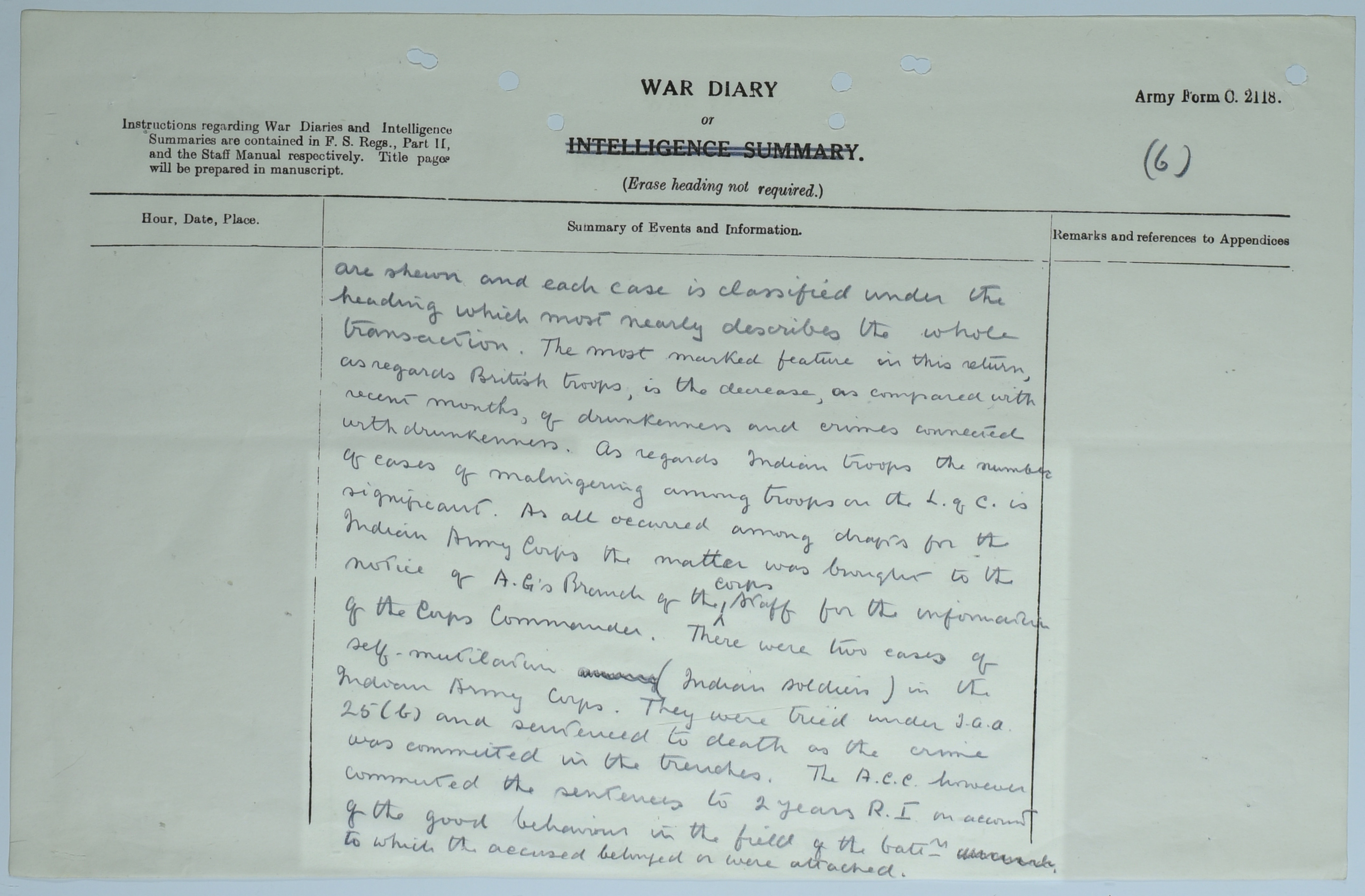
Cases of malingering by troops, October 1914 to March 1915 (catalogue reference WO 154/14)
This extract on the Indian Army Corps comes from a report dated 1 October 1914 to 31 March 1915. It highlights incidents of malingering and self-mutilation among some of the Indian soldiers which are considered ‘significant’.
Could this be considered an illustration of dissent among Indian soldiers in the face of the industrial warfare they encountered on the Western Front which was so different from the frontier warfare they were accustomed to? Certainly, evidence shows that between 22 October and 3 November 1914 the rate of hand wounds among Indian soldiers admitted to hospital was 57%, a higher rate than that for white soldiers. The suspicion was that the wounds were self-inflicted. Could this be due to morale crumbling after the troops experienced the carnage at the battle of Ypres? Even though the wounds were both in the right and left hands? The rate of self-mutilation dropped sharply after this and occurred only once again in May 1915 among the newly arrived reinforcements unused to trench warfare.
Transcript (highlighted passage)
As regards Indian troops the number of cases of malingering among troops of the L of C is significant. As all occurred among charges for Indian Army Corps the matter was brought to the notice of A.G.’s Branch of the Corps Staff for the information of Corps Commander. There were two cases of self-mutilation (Indian soldiers) in the Indian Army Corps. They were tried under I.G.A. 25(b) and sentenced to death as the crime was committed in the trenches. The A.C.C. however commuted the sentences to 2 years R.I. on account of the good behaviour in the field of the battalion to which the accused belonged or were attached.
